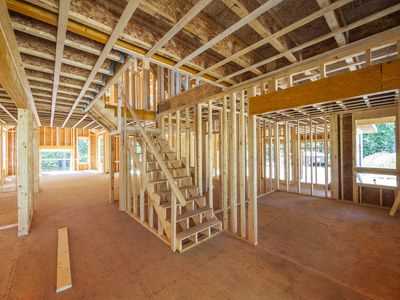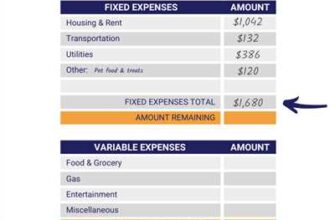
Building your own home has become a popular choice for many people who want to have control over every aspect of their living space. With the right planning and guidance, you can turn your dream home into a reality. From finding the perfect plot of land to choosing the right contractors, this step-by-step guide will show you how to navigate the self-build process.
Before getting started, it’s important to have a clear idea of what you want in terms of design, size, and budget. By considering these factors in advance, you’ll be able to make more informed decisions when it comes to buying the right plot of land and hiring contractors. Additionally, you’ll also need to obtain the necessary permissions and warranties to ensure that your project is in compliance with local regulations.
The first step in the self-build process is finding a suitable plot of land. Depending on your location, this could be an easy or challenging task. It’s essential to consider factors such as the area, access to amenities, and the potential for future growth. Once you’ve secured a plot, you can start planning the project in more detail.
When it comes to budgeting, it’s important to be realistic about how much the project will cost. While self-build homes can be more affordable than buying an existing property, they’re not necessarily cheaper. You’ll need to factor in the cost of land, materials, labor, and any additional expenses that may arise during the construction process. To get a better idea of the average costs in your area, you can consult with professionals or look for industry resources.
Choosing the right builder is crucial to the success of your self-build project. You’ll want to select a contractor who has experience in homebuilding and is familiar with the type of house you want to build. Additionally, it’s important to ensure that the builder is trustworthy and reliable, as you’ll be working closely with them throughout the entire process.
Once construction begins, you’ll need to project-manage the work to ensure that everything is on track. Regular meetings with the contractors and architects will help you stay informed about the progress and address any issues that may arise. From making selections for fixtures and finishes to coordinating the installation of utilities, there will be many decisions to be made along the way. This is why it’s important to stay organized and keep track of all documentation and contracts related to the project.
- In Conclusion
- What Is the Home Building Process for a Custom Home in Texas
- What You’ll Find in This Guide
- Before the build
- Choosing a home type
- Finding and buying a plot of land
- Designing your home
- Getting a self-build mortgage
- Getting planning permission and a building warrant
- Cost to Build a House by Size
- How do I project-manage a self-build
In Conclusion
Building your own home can be an exciting and rewarding experience. By following this guide and doing your research, you can ensure that your self-build project is a success. Remember to consider all aspects of the process, from planning and budgeting to finding the right contractors and making selections. With the right preparation and dedication, you can create the home of your dreams.
What Is the Home Building Process for a Custom Home in Texas
If you’re here, you’re probably planning to build your own custom home in Texas. Building a home can be a daunting task, but with proper planning and a clear budget, you can successfully build your dream home.
Before you begin your self-build project, it’s important to find a reliable builder or project manager who can guide you through the process. They will work with you to determine the average cost per square feet based on the type of home you’re looking to build.
Whether you’re buying a plot of land or choosing to build on an existing one, you’ll need to make sure you have the necessary permission and permits in place before starting the construction process. This includes obtaining a mortgage for the project if needed.
Once you have your land and budget in place, the first step is to start designing your custom home. You’ll work with an architect or a homebuilder to create a design that suits your needs and meets your budget requirements.
After the design is finalized, the builder will provide you with a detailed contract that outlines the scope of the project and the costs involved. It’s important to review the contract carefully before signing it to ensure that all your requirements are met.
Once the contract is signed, the homebuilding process can begin. This will involve hiring contractors for various aspects of the construction work, such as foundation, framing, plumbing, electrical, and so on. The builder will manage the project and ensure that the work is progressing according to plan.
Throughout the process, you’ll have regular meetings with the builder to discuss progress, make decisions on selections such as fixtures and finishes, and address any concerns or changes that may arise. It’s important to maintain open and clear communication with the builder to avoid any misunderstandings.
Building a custom home can take time, so be prepared for delays or unexpected issues that could arise during the construction process. It’s always a good idea to have some extra time and budget set aside for such contingencies.
Once the construction is complete, the builder will do a final walkthrough with you to show you the finished home and address any remaining issues or touch-ups that may be needed. After that, you can move into your brand new custom home.
Building a custom home in Texas can be a complex process, but with the right builder and proper planning, you can successfully bring your dream home to life. Make sure to do your research, find reliable sources, and take your time to make informed decisions throughout the homebuilding process.
What You’ll Find in This Guide
In this guide on how to build your home, we’ll show you everything you need to know about the process, from finding and buying a plot of land to selecting contractors and designing your dream house. Whether you’re planning to do a self-build or work with a custom builder, we have all the information and resources you’ll need to make sure your project goes smoothly.
First, we’ll start by helping you understand the costs and budgeting involved in homebuilding. We’ll break down the average cost per square foot in Texas and show you how to estimate the total cost of your project. You’ll also learn about the different types of mortgages available for building a home and what you need to know before meeting with a lender.
Once you have a clear idea of your budget and financing options, we’ll guide you through the process of finding and buying land. We’ll discuss the importance of location, size, and zoning regulations, as well as how to make sure the plot you choose is suitable for your project. You’ll also learn about the extra considerations you’ll need to make if you’re planning to build in a popular area or on a custom site.
With your land secured, we’ll show you how to work with architects and designers to create a home that suits your vision and needs. We’ll cover the basics of the design process, including making selections for materials and finishes, and ensuring that your design meets local building codes and regulations. You’ll also learn how to navigate the project management side of the process, including how to work with contractors and ensure that your project is completed on time and within budget.
Throughout this guide, we’ll provide you with tips and resources to help you make informed decisions and avoid common pitfalls. Whether you’re a first-time homebuilder or have experience in the construction industry, we’re here to make sure you have the tools and knowledge you need to build your dream home.
Before the build
Before you start building your home, there are a few important steps you need to take.
First, you should spend some time planning and budgeting for your self-build project. Decide how much you’re willing to spend and make sure you have enough saved up or have a mortgage approved. This will help you determine what type of home you can afford and how much you can spend on various selections such as design and materials.
You’ll also need to find a plot of land to build on. Consider the size and location of the plot and make sure it’s suitable for the house you want to build. You may need to obtain planning permission before you can start building. Check with your local authority to see what permissions you’ll need and whether there are any restrictions or requirements for your plot.
Once you have an idea of your budget and a suitable plot, it’s time to start designing your home. If you’re not experienced in architecture and design, you may want to work with a custom builder who can guide you through the process. They’ll help you create a design that fits your needs and desires while staying within your budget.
Getting contractors and suppliers involved early in the process can also help ensure a smooth build. Meet with potential contractors and discuss your project with them. Show them your plans and get estimates for the cost and timeline of the build.
Before you sign any contracts or make any commitments, make sure you have a good understanding of what the project will entail and what it will cost. Ask for references and check that the contractors you choose are reputable and have experience in self-build projects.
Once you’re ready to start building, be prepared for the work to take longer and cost more than you initially anticipated. Construction projects often encounter unexpected obstacles and delays, so it’s important to have some extra time and money set aside.
By following these steps and doing your due diligence before the build, you’ll be well-prepared to create the home of your dreams.
Choosing a home type
When it comes to building your own home, there are many things to consider, including choosing the right type of home for your needs and preferences. Here are some factors to keep in mind during the home selection process:
1. Know your budget: Before you start looking for a home type, it’s important to have a clear understanding of your budget. Determine how much you can afford to spend on your project, including the cost of getting the necessary permissions and hiring contractors.
2. Find a plot of land: If you don’t already have a plot of land, you’ll need to find one before you can start building. Make sure to do your research and find a plot that suits your needs, such as its size and location.
3. Consider the different types: There are various types of homes you could choose from, including custom homes, self-build homes, and pre-designed homes. Each type has its own advantages and disadvantages, so make sure to weigh your options.
4. Think about your lifestyle: Consider your lifestyle when choosing a home type. For example, if you want a low-maintenance house, a smaller home or a pre-designed home could be a good option. On the other hand, if you want more control over the design and features of your home, a custom home might be the way to go.
5. Meet with builders and designers: Once you have an idea of what type of home you want, it’s important to meet with builders and designers to discuss your project. They can guide you through the process and help you make informed decisions.
6. Show them your selections: When meeting with builders and designers, make sure to bring any selections you have made so far, such as photos or sketches of your dream home. This will help them understand your vision and provide more accurate guidance.
7. Consider project management: If you’re not experienced in homebuilding, you may want to consider hiring a project manager to oversee the construction process. They can handle tasks such as finding contractors and managing the timeline.
8. Understand the costs: It’s important to understand the costs involved in building your own home. On top of the cost of the house itself, you’ll need to budget for extras such as furnishings and landscaping.
Overall, choosing the right type of home is a crucial step in the homebuilding process. Take your time to research and consider your options carefully, as the type of home you choose will have a big impact on your future living experience.
Finding and buying a plot of land
When it comes to building your own home, one of the first and most important steps is finding and buying the right plot of land. This is where your dream house will be built, so it’s crucial to make sure you find the perfect location.
Before you start looking for land, make sure you have a clear idea of what you want and need in a home. Consider the size and type of home you want to build, as well as any specific features or requirements you may have. This will help guide your search and ensure you find a plot that is suitable for your project.
If you’re not sure where to start or how to go about finding land, there are some resources that can help. One option is to work with a real estate agent who specializes in land sales. They can help guide you through the process and show you available properties that meet your criteria.
Another option is to use online platforms or websites that list land for sale. These platforms often have search filters that allow you to narrow down your selection based on factors such as location, size, and price. They’re a convenient way to browse a wide range of available options.
Once you’ve found a plot of land that you’re interested in, it’s important to do some due diligence before making an offer. Check with local planning authorities to ensure that the land is suitable for building and that you’ll be able to obtain the necessary permits and permissions.
You should also consider factors such as the cost of the land and whether it fits within your budget. Keep in mind that there may be additional costs involved, such as getting a mortgage, designing your home, and hiring contractors to do the work.
In Texas, for example, the average cost of land can vary depending on the location and size. It’s important to know what you’re getting into before committing to a purchase.
When meeting with the land seller or builder, be sure to ask about any warranties or guarantees that they offer. This can provide you with peace of mind knowing that the land is free from any defects or issues.
In summary, finding and buying a plot of land is a crucial step in the self-build homebuilding process. Take your time to do your homework and make sure the land is suitable for your needs and within your budget. Once you’ve found the perfect site, you can move forward with the rest of the homebuilding project.
Designing your home

Designing your own home is an exciting and creative process. It allows you to have full control over the look and feel of your space, ensuring that it meets your needs and reflects your personal style. However, designing a home is not a task that should be taken lightly. It requires a lot of planning, decision-making, and coordination.
First, you’ll need to find a suitable plot of land to build your home on. Once you have found the right location, you’ll have to consider the cost of the land and any permissions or permits that may be required before you can start the building process.
Before you begin designing your home, it’s important to have a clear idea of what you want and need. You should consider factors such as the size of the house, the number of rooms, and the overall layout. It’s also important to think about any specific features or amenities that you would like to include, such as a home office, a gym, or a backyard pool.
When it comes to designing your home, you have a few options. You can choose to work with a custom homebuilder who will guide you through the entire process, from finding the right contractors to making selections for your home. Alternatively, if you have some experience in construction and project management, you could project-manage the build yourself, hiring contractors as needed.
In Texas, self-build custom homebuilding is a popular choice, with many resources available to guide you through the process. You’ll need to do your own research and find out what type of home you can afford, including the average cost of building in your area and the requirements for obtaining a mortgage. Once you have a budget in mind, you can start choosing the design for your home.
Keep in mind that designing a home is not just about the interior. You’ll also need to consider the exterior, as well as the overall look and feel of the neighborhood. Take the time to do some research on different architectural styles and find a design that suits your taste and the style of the area where you’ll be building.
When you have a design in mind, you’ll need to work with a builder to bring your vision to life. This will involve meetings with the builder to go over your plans, make any necessary adjustments, and obtain a warrant for the work. Your builder can also show you examples of their previous work to give you an idea of what to expect.
Finally, once the design and plans are finalized, you can start the building process. This will involve preparing the site, laying the foundation, framing the structure, and completing all of the necessary construction work. Throughout the process, it’s important to stay in communication with your builder and ensure that the project is progressing according to plan.
Designing your own home is a big undertaking, but with proper planning and the help of experienced professionals, it can be a rewarding and fulfilling process. Take the time to do your research, find the right team to work with, and make sure you have a clear understanding of your budget and timeline. By following these steps, you’ll be well on your way to building a home that is truly your own.
Getting a self-build mortgage
If you’re planning on building your own home, you’ll need to know how to get a self-build mortgage. This type of mortgage is specifically designed for self-build projects, where you take on the role of the builder and project manager.
Before you begin the process of getting a self-build mortgage, there are some important things you should know. First, you’ll need to find a plot of land to build on. Make sure to do your research and find a plot that is suitable for your homebuilding project, including the size, location, and any necessary permits or planning permissions.
Once you have a plot of land, you can start designing your home. You can choose to work with a custom home builder or use pre-designed plans. Either way, make sure to consider your budget and the cost of the project when making your selections.
When it comes to financing your self-build project, you’ll find that self-build mortgages are a popular option. They’re specifically designed for self-build projects and offer more flexibility than traditional mortgages. With a self-build mortgage, you’ll typically receive funds in stages as the project progresses.
It’s important to note that self-build mortgages typically require a larger deposit than traditional mortgages. You may also need to provide extra documentation, including detailed plans and cost estimates, to secure the mortgage. Make sure to find a mortgage lender who specializes in self-build mortgages.
Once you’ve found a plot of land, designed your home, and obtained a self-build mortgage, it’s time to start building. You’ll need to find and hire contractors to do the work, and you’ll need to make sure that everything is completed to your specifications. This can be a challenging and time-consuming process, so make sure you’re prepared.
| Some key things to know about getting a self-build mortgage: |
|---|
| Self-build mortgages are specifically designed for self-build projects. |
| You’ll need to find a suitable plot of land before getting a self-build mortgage. |
| Designing your home and making selections for the project is an important part of the process. |
| Self-build mortgages offer more flexibility than traditional mortgages. |
| You’ll likely need a larger deposit and provide extra documentation for a self-build mortgage. |
| Once you have your mortgage, you can start building your home. |
| Make sure to find and hire contractors who can complete the work to your specifications. |
| Be prepared for the challenges and time commitment that come with building your own home. |
Getting a self-build mortgage is an important step in the homebuilding process. It allows you to take control of your project and build the home of your dreams. Just make sure to do your research, find the right lender, and stay organized throughout the process.
Getting planning permission and a building warrant
Gaining planning permission and a building warrant are crucial steps in the process of building your own home. Before you start any work, including designing your home and choosing a builder, you’ll need to make sure you have the necessary permissions and permits.
When it comes to obtaining planning permission, you’ll need to submit your designs and plans to the local planning department. They will assess your proposal and determine whether it complies with local regulations and guidelines. This process can take some time, so it’s important to factor in potential delays when planning your project timeline.
In addition to planning permission, you’ll also need to obtain a building warrant. This is a legal requirement in many countries and ensures that your building project meets building standards and regulations.
It’s worth noting that the average cost of getting planning permission and a building warrant can vary depending on the size and type of your project. Additionally, the process can differ between locations, so it’s important to check with your local authority for specific requirements.
Before applying for planning permission and a building warrant, you’ll need to have a clear idea of your budget and the type of home you want to build. This will help guide you in the selection process and ensure you can make informed decisions. You may also need to consider additional factors, such as finding the right plot of land and securing a mortgage.
Once you have the necessary permissions in place, you can start the process of selecting contractors and project managing the build. This includes making design selections, sourcing building materials, and overseeing the construction process.
It’s important to meet regularly with your contractors to ensure everything is progressing as planned and to address any issues that may arise. This will help to keep your project on track and avoid any costly delays or mistakes.
| Planning Permission | Building Warrant |
|---|---|
| Submit designs and plans to local planning department | Ensure your project meets building standards |
| Assessed for compliance with local regulations and guidelines | Legal requirement in many countries |
| Process can take time | Varies in cost depending on project size and type |
By following this guide, you’ll have a better understanding of how to get planning permission and a building warrant for your self-build project. This will ensure that the process goes smoothly and that you can build your dream home without any complications.
Cost to Build a House by Size

Designing and building your own home can be an exciting and rewarding project. If you’re considering taking on the task of building your own home, it’s important to know the cost involved, especially when it comes to the size of the house you want to build. The cost of a homebuilding project can vary depending on a number of factors, but knowing how much you can expect to spend based on the size of your home can help you budget and plan accordingly.
When it comes to building a house, there are several variables that can impact the cost. The average cost per square foot can range from $100 to $400 depending on the type of house you’re building and the location you’re building in. It’s important to keep in mind that these are just average costs, and they can vary significantly depending on your specific project and the choices you make along the way.
If you’re getting a mortgage to finance your homebuilding project, your lender will need to know the estimated cost of your project in order to determine how much they’re willing to lend you. In addition to the cost of the building materials and labor, you’ll also need to factor in the cost of the land you’re building on, as well as any extra expenses such as permits or hiring contractors.
Before you start the homebuilding process, it’s important to have a clear idea of the size and type of home you want to build. From there, you can start looking for a plot of land that meets your needs and budget. Once you have found a suitable site, you’ll need to obtain planning permission before you can proceed with your project.
If you’re considering a self-build project, you’ll need to decide whether you want to act as your own project manager or hire a builder to oversee the construction process. Both options have their pros and cons, so it’s important to carefully consider which route is best for you.
When it comes to choosing a builder, be sure to look for qualified and experienced professionals who have a good track record. You’ll also want to get multiple quotes from different builders to ensure you’re getting a fair price for your project.
Once your homebuilding project is underway, you’ll need to make a number of important decisions, from selecting materials and finishes to choosing fixtures and appliances. These decisions can impact both the overall cost of your project and the final look and feel of your home, so it’s important to take your time and make informed choices.
Building a custom home allows you to create a space that meets your specific needs and tastes, but it can also come with additional costs. Depending on the selections you make, you could end up spending more money on features and finishes than you initially budgeted for.
Throughout the homebuilding process, you’ll need to work closely with your builder or project manager to ensure everything is on track and progressing as planned. Regular meetings and site visits will help you stay informed and address any potential issues or concerns along the way.
By following this guide, you should have a better idea of the cost of building a house based on its size. Remember to do your research, obtain multiple quotes, and carefully plan each step of the process to ensure your homebuilding project stays within budget and meets your expectations.
How do I project-manage a self-build
Managing a self-build project can be challenging, but with a sure idea and proper planning, you can successfully build your dream home within your budget and timeline. Here are some essential steps to project-manage your self-build:
- Define your objectives: Before starting your self-build project, you need to have a clear idea of what you want in terms of design, size, and features for your home. This will help you in the decision-making process.
- Secure financing: Determine how much you can afford and explore your options for a self-build mortgage. Knowing your budget will guide your decision-making process and ensure you stay within your means.
- Find the right plot of land: Look for a suitable plot of land for your self-build project. Consider factors such as location, size, cost, and necessary permissions.
- Choose a builder or contractors: Research and meet with potential builders or contractors to discuss your project requirements. Ensure they’re experienced in self-build projects and have a good track record.
- Designing and planning: Work closely with your chosen builder or architect to create a detailed design and plan for your home. This includes making selections for materials, fixtures, and finishes.
- Obtain necessary permissions: Before starting the construction, make sure you have obtained all the required permits and permissions from local authorities. This includes planning permission and building regulations approval.
- Project management: Once construction begins, you’ll need to oversee the project and ensure that the work is progressing according to schedule and specifications. Regular meetings with contractors are essential to keep everyone aligned.
- Managing the budget: Monitor the costs of materials, labor, and any additional expenses that may arise during the construction process. Keep track of your spending and make adjustments if necessary.
- Quality control: Regularly inspect the work being done to ensure it meets the required standards and specifications. Address any issues or concerns promptly to avoid delays or additional costs.
- Closing the project: Once the construction is complete, conduct a final inspection to ensure everything is in order. Obtain the necessary certificates and warranties for your new home.
Project-managing a self-build requires careful planning, organization, and effective communication with all parties involved. Being proactive and attentive throughout the process will help ensure a successful outcome for your self-build project.










